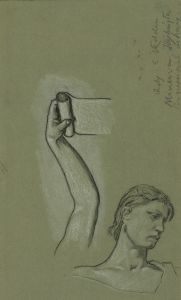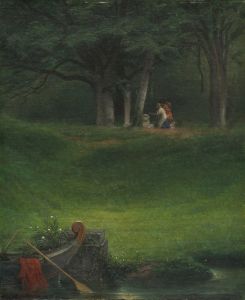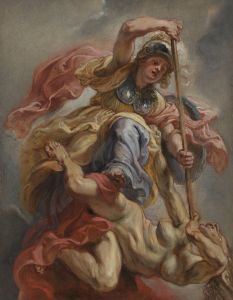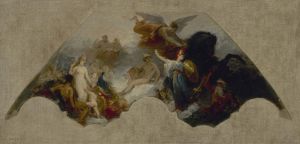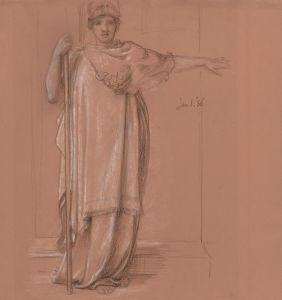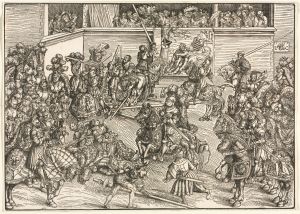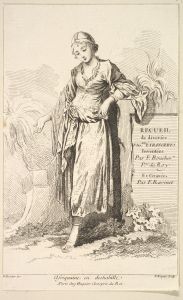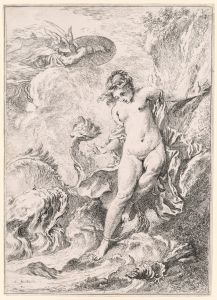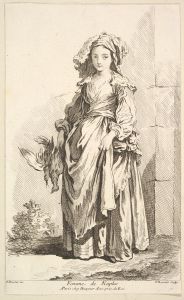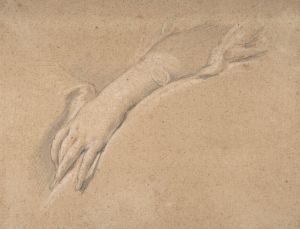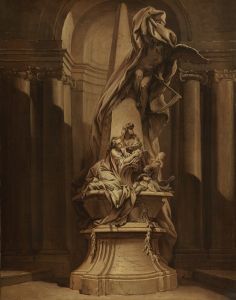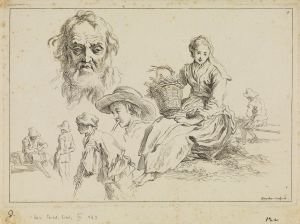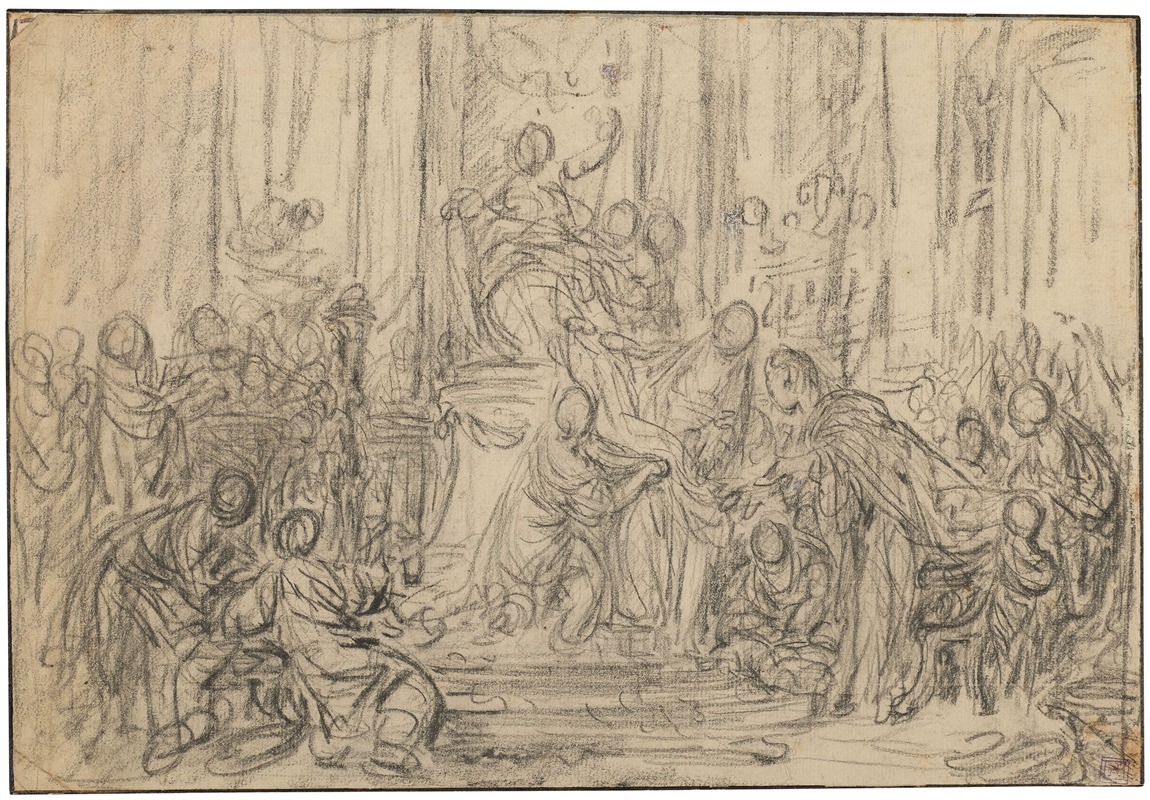
Hécube et Cassandre offrant une étoffe à Minerve
A hand-painted replica of François Boucher’s masterpiece Hécube et Cassandre offrant une étoffe à Minerve, meticulously crafted by professional artists to capture the true essence of the original. Each piece is created with museum-quality canvas and rare mineral pigments, carefully painted by experienced artists with delicate brushstrokes and rich, layered colors to perfectly recreate the texture of the original artwork. Unlike machine-printed reproductions, this hand-painted version brings the painting to life, infused with the artist’s emotions and skill in every stroke. Whether for personal collection or home decoration, it instantly elevates the artistic atmosphere of any space.
Hécube et Cassandre offrant une étoffe à Minerve (Hecuba and Cassandra Offering a Cloth to Minerva) is a painting by the renowned French artist François Boucher. Boucher, born in 1703 and died in 1770, was a prominent painter in the Rococo style, known for his idyllic and voluptuous depictions of classical themes, pastoral scenes, and allegorical subjects.
This particular painting, Hécube et Cassandre offrant une étoffe à Minerve, was created in 1761. It is an oil on canvas work that exemplifies Boucher's mastery in rendering delicate textures and his skillful use of color. The painting depicts a scene from classical mythology involving Hecuba, the queen of Troy, and her daughter Cassandra, who are shown offering a cloth to Minerva, the Roman goddess of wisdom and strategic warfare, known as Athena in Greek mythology.
In the composition, Minerva is typically portrayed with her attributes, such as the helmet and the shield, which often features the head of Medusa. Hecuba and Cassandra are depicted in a moment of supplication, presenting the cloth to the goddess, which signifies a gesture of seeking favor or protection. The scene is imbued with a sense of grace and elegance, characteristic of Boucher's style, with soft, flowing lines and a harmonious color palette.
The painting is a fine example of Boucher's ability to blend mythological subject matter with the Rococo aesthetic, which emphasizes lightness, decorative art, and playful themes. The figures are rendered with a delicate touch, and the drapery of their garments is depicted with a remarkable sense of texture and movement. The background often features a serene landscape or an architectural element that adds depth to the scene.
François Boucher was a favorite of Madame de Pompadour, the chief mistress of King Louis XV, and his works were highly sought after by the French aristocracy. His paintings often adorned the walls of the royal palaces and the homes of the wealthy elite. Boucher's influence extended beyond painting to include tapestry design, stage sets, and the decoration of porcelain.
Hécube et Cassandre offrant une étoffe à Minerve is housed in the Louvre Museum in Paris, where it remains an important piece within the collection of 18th-century French paintings. The Louvre's collection of Boucher's works provides valuable insight into the Rococo period and the artistic trends of the time.
In summary, Hécube et Cassandre offrant une étoffe à Minerve by François Boucher is a quintessential example of Rococo art, reflecting the elegance and mythological interests of the 18th-century French aristocracy. The painting showcases Boucher's technical prowess and his ability to convey classical themes with a light, decorative touch.





